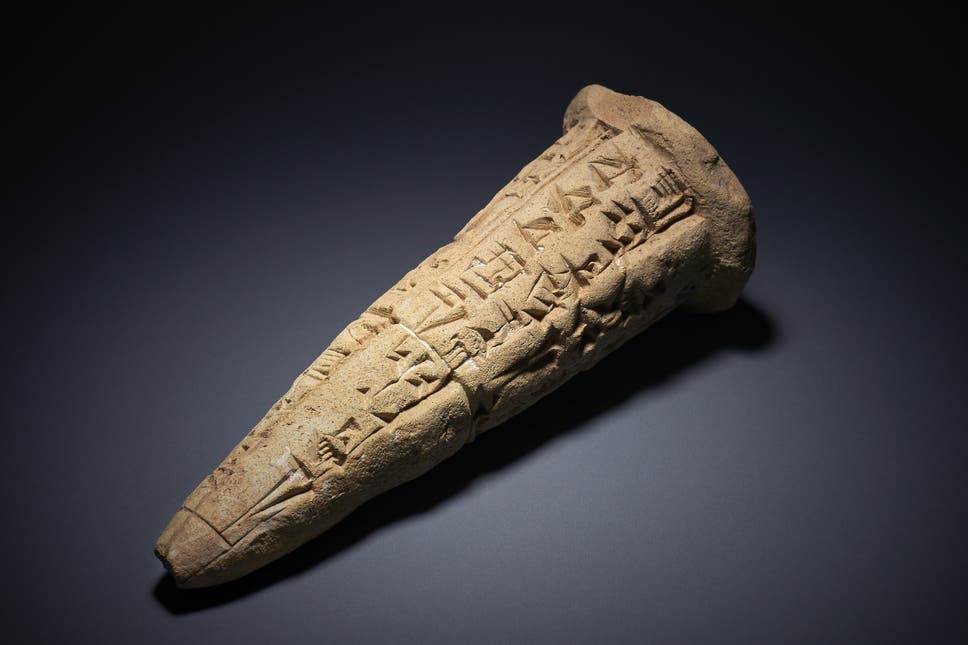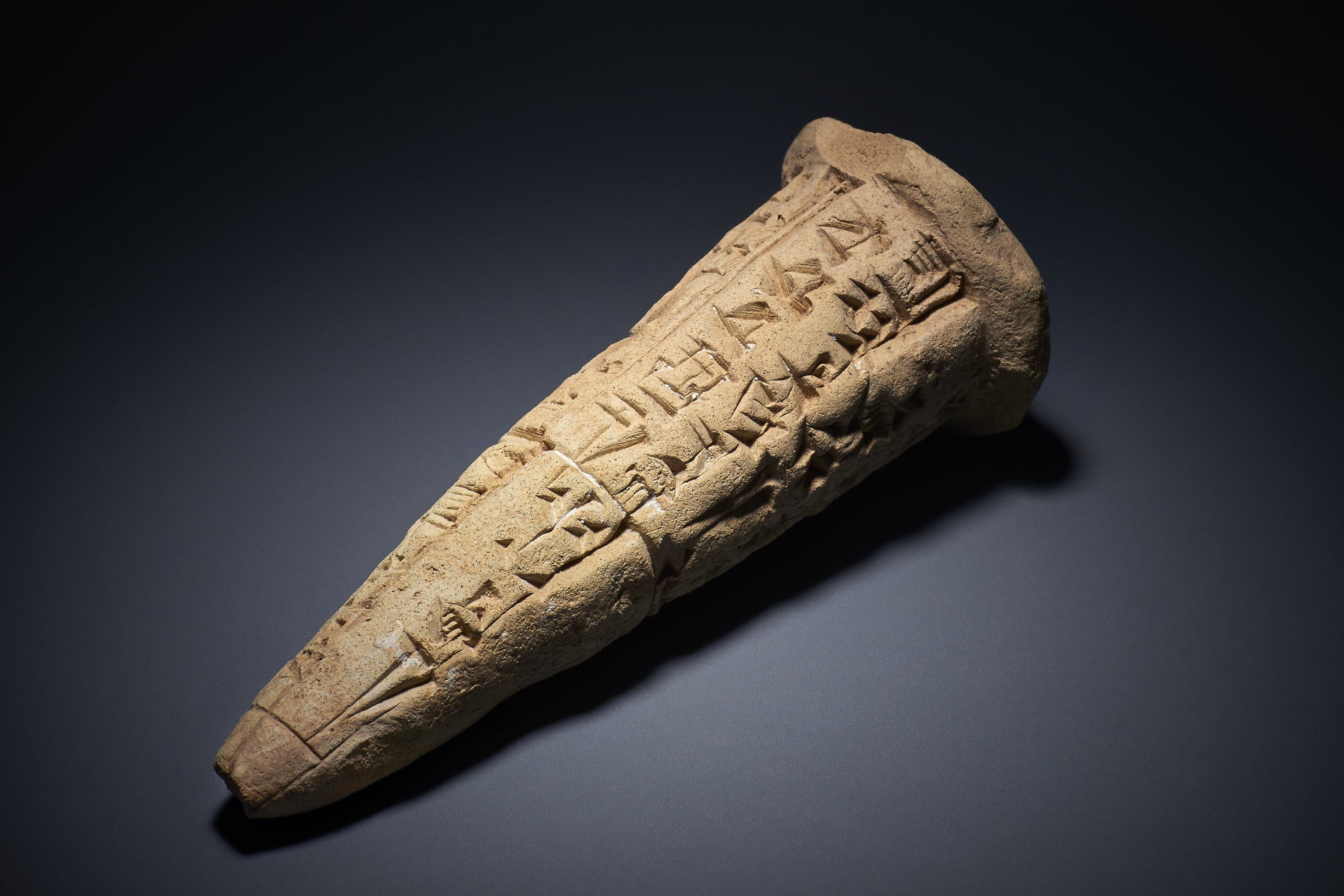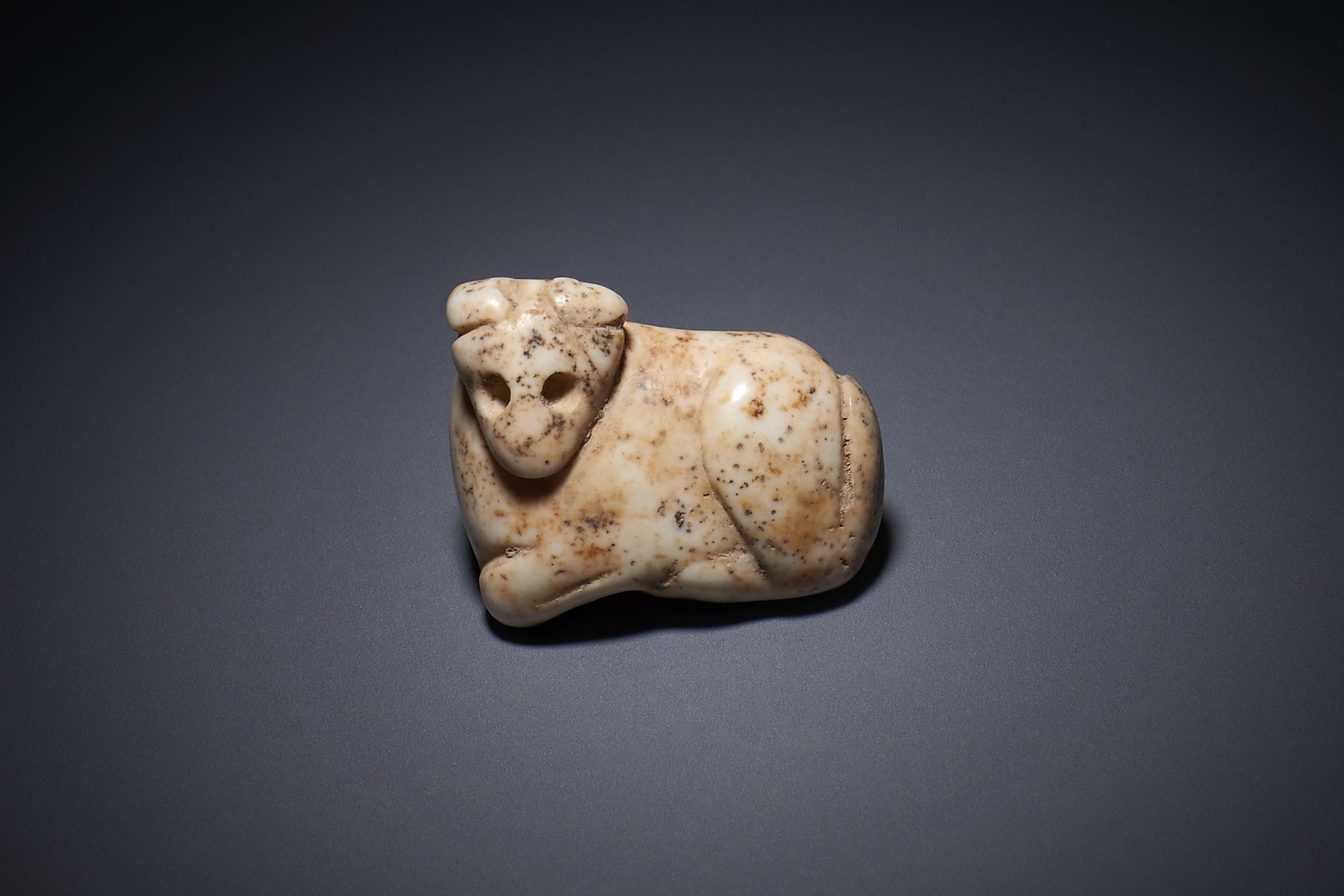
The British Museum is returning a collection of 5,000-year-old antiquities which had been looted from an ancient site in Iraq shortly after the 2003 US-led invasion and then seized from a dealer in London.
The eight objects were confiscated by Scotland Yard during a May 2003 operation, after they were suspected of being looted and the dealer failed to produce proof of ownership for them.
The British Museum said the dealer then ceased trading and the objects which include jewellery, inscribed cones, a decorated seal and a mace-head, were passed to the Crown and then on to the British Museum for analysis earlier this year.
Identification of the origins of the objects was aided by three items carrying cuneiform inscriptions - one of the earliest systems of writing - invented by the Sumerians.
The Sumerian text indicates they came from the Eninnu temple in the ancient city of Girsu, now known as Tello, in southern Iraq.
Located in the area of the city now known as Tell A and where current excavations are revealing the plan and extent of this important complex.
The temple is understood to have been sacred to the deity Ningirsu.
The British Museum has significant expertise in archaeological finds from this area and since 2016 has been training Iraqi archaeologists at excavation sites in Tello.
"The other items are identical to objects known from excavations at Tello and most likely also originate from the same site," the museum said in a statement.

The confiscation of the eight objects in May 2003 came just two months after the first phase of the US and UK invasion of the country, which George W Bush and Tony Blair said was “to disarm Iraq of weapons of mass destruction”.
The invasion prompted massive amounts of looting in Iraq, with antiquities among the main items targeted, as troops were unable to guard a large number of sites as well as the hospitals, water plants and public buildings. The National Museum of Iraq was almost entirely looted, with the FBI estimating tens of thousands of items had gone missing.
According to the British Museum, the eight objects from Tello were removed at around the same time. “This activity would have been clandestine, probably carried out at night and possibly conducted by a small number of individuals over a limited period of time as the scale is not as extensive or systematic as witnessed at other sites in southern Iraq,” the museum said.
The statement added: “Analysis of the art market shows that similar inscribed cones were offered for sale during the same period.”

Iraq's ambassador, Salih Husain Ali, praised the museum's staff for their "exceptional efforts" in identifying the antiquities.
"Such collaboration between Iraq and the United Kingdom is vital for the preservation and the protection of the Iraqi heritage," he said. "The protection of antiquities is an international responsibility and in Iraq we aspire to the global cooperation to protect the heritage of Iraq and to restore its looted objects."
Hartwig Fischer the director of the British Museum said: “The British Museum is absolutely committed to the fight against illicit trade and damage to cultural heritage. This is an issue which concerns us all.
“I am delighted that we are able to assist in the return of these important objects to Iraq, via the Embassy of the Republic of Iraq in London. It is a symbol of the very strong working relationships we have with our Iraqi colleagues, developed over many years and extended through the British Museum-run Iraq Scheme. The return of these objects is particularly poignant given the connection to Tello, one of the sites currently being excavated by the Iraq Scheme.”
The group of eight artefacts consists of five Sumerian inscribed objects, two Jemdet Nasr stamp-seal amulets in the form of a reclining sheep or showing a pair of quadrupeds facing in opposite directions, and an Achaemenid stamp-seal showing a reclining sphinx.
Descriptions of the objects:
- Three complete fired clay cones, each with an identical cuneiform inscription which is known from many other examples: ‘For Ningirsu, Enlil’s mighty warrior, Gudea, ruler of Lagash, made things function as they should (and) he built and restored for him his Eninnu, the White Thunderbird’.
- A fragmentary white gypsum mace-head with an inscription in Old Sumerian script which reads as follows: ‘… ruler of Lagash … dedicated this (macehead) for him’. a polished yellowish river pebble with a cuneiform inscription apparently in Old Sumerian script.
- A white marble amulet pendant in the form of a reclining quadruped, dating to the Jemdet Nasr period (c. 3000 BC). a red marble square tabular stamp seal / amulet pendant representing a pair of drilled stylised quadrupeds, facing in opposite directions, each with a separate drilled hole in front and an engraved crescentic line behind, dating to the Jemdet Nasr period (c. 3000 BC).
- A banded white chalcedony stamp seal with a flat oval face engraved with the design of a reclining sphinx facing right, dating to the Achaemenid period.
The objects are to be formally handed over to the Iraqi Embassy in a small ceremony held at the British Museum on Friday.







